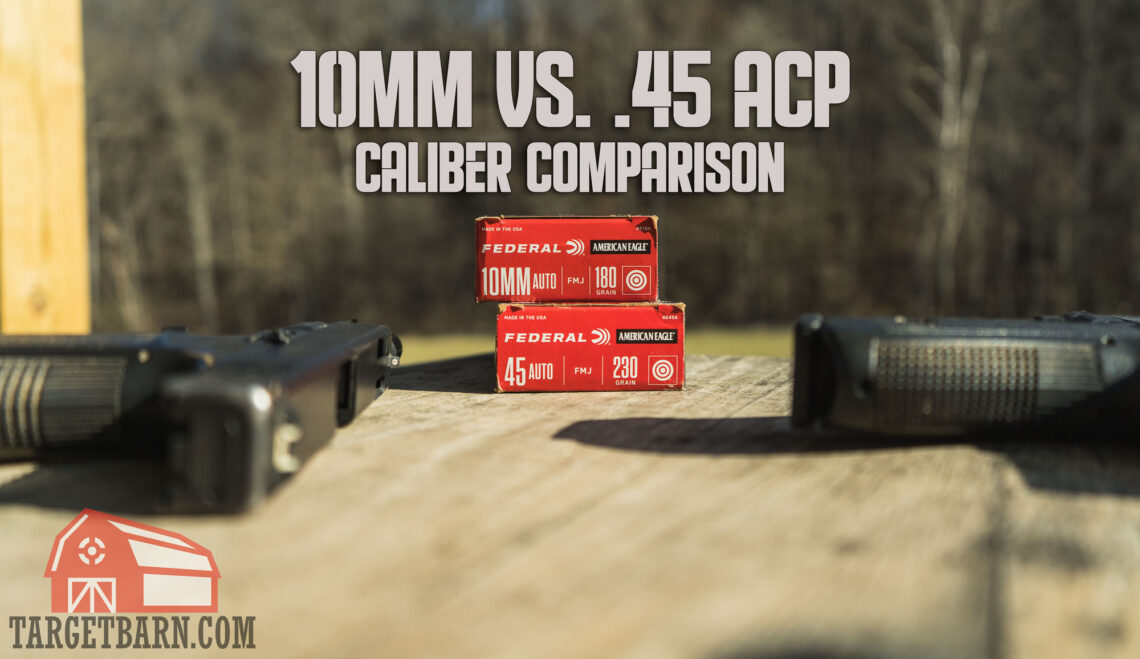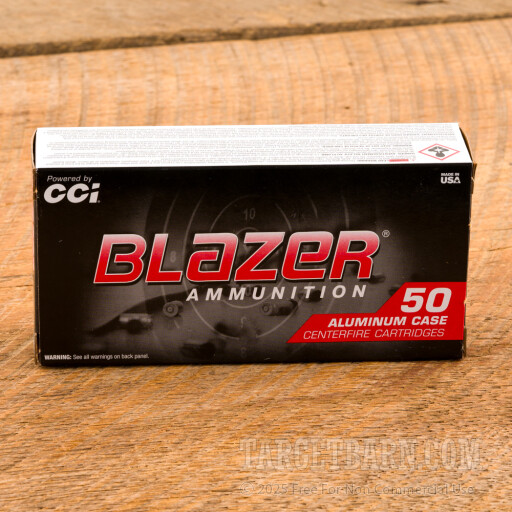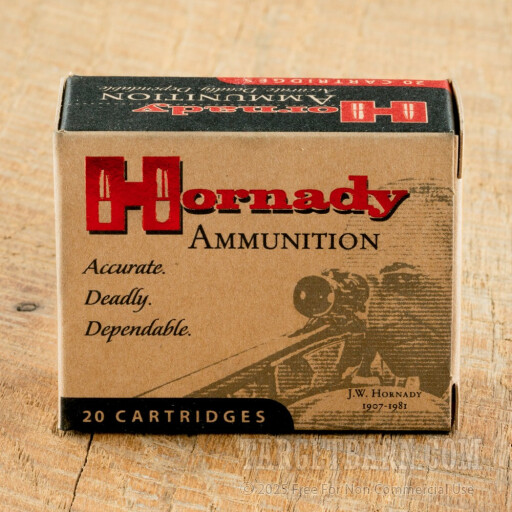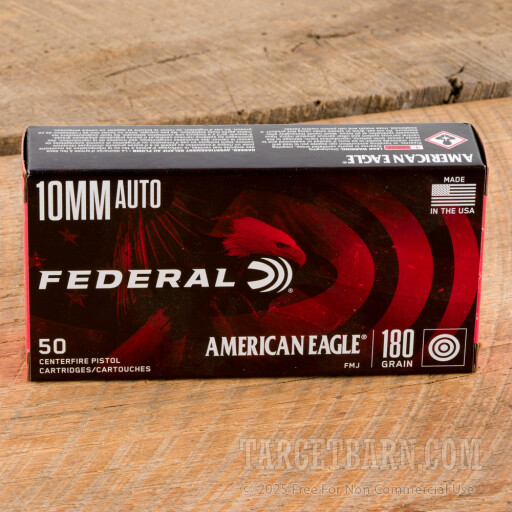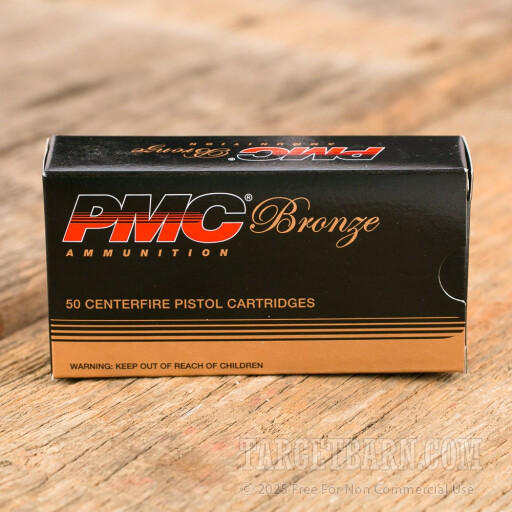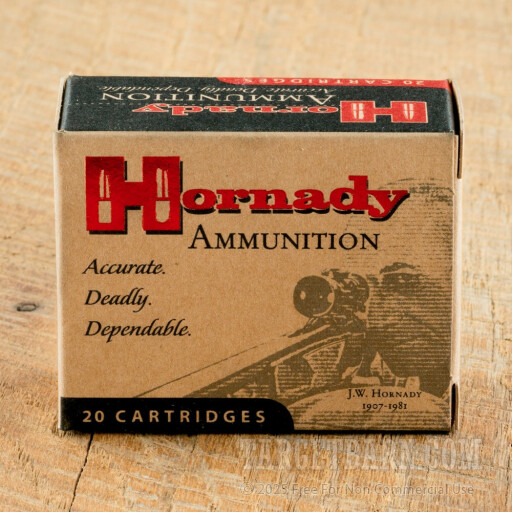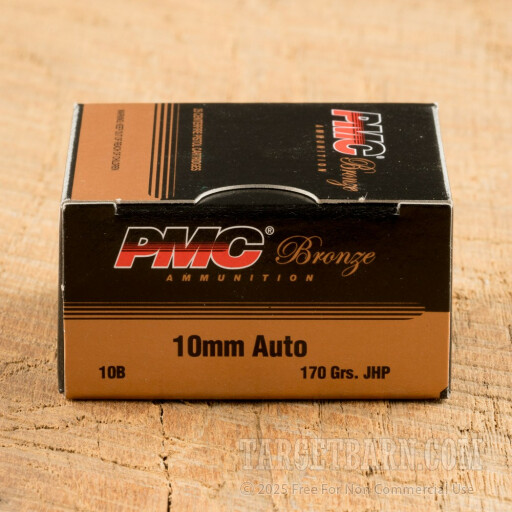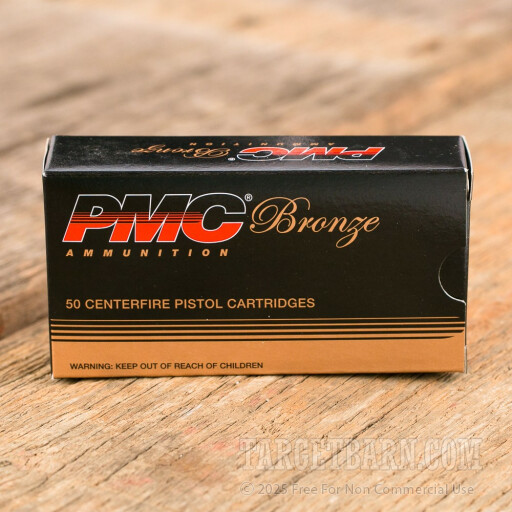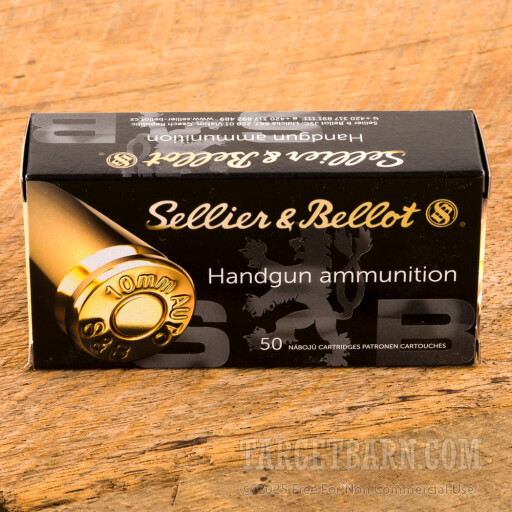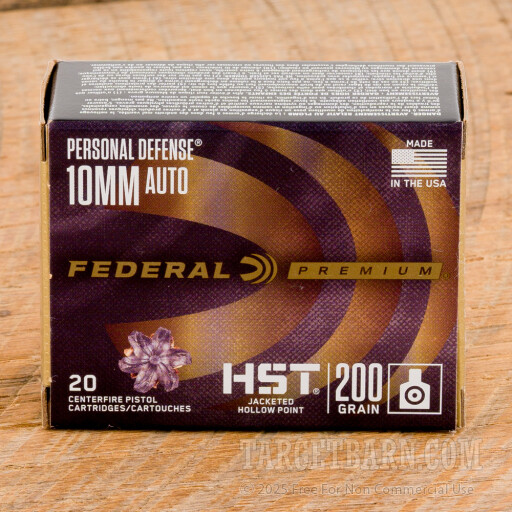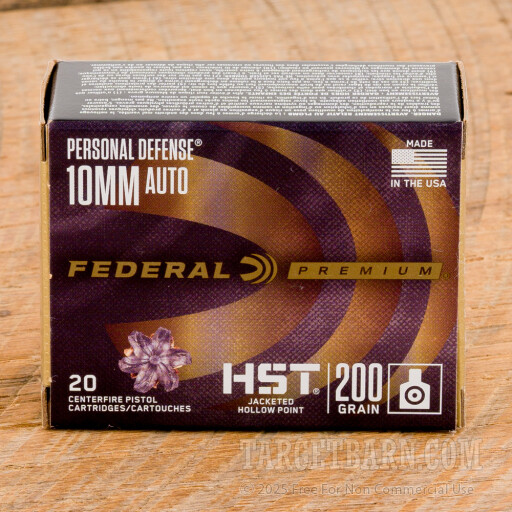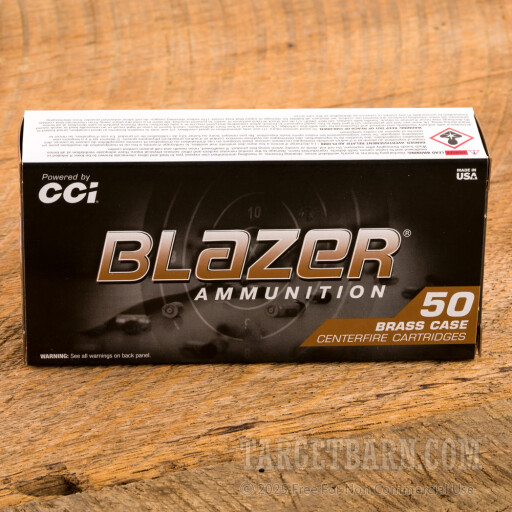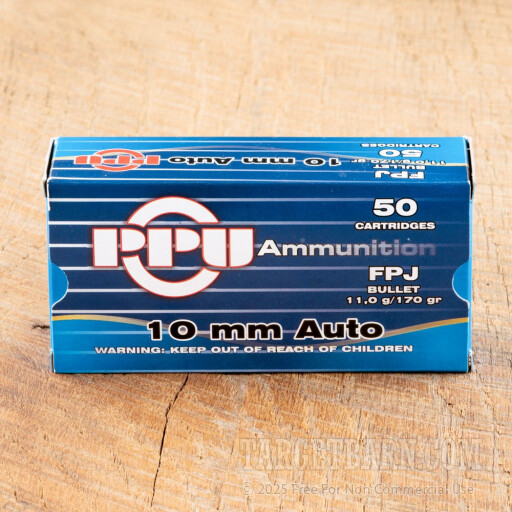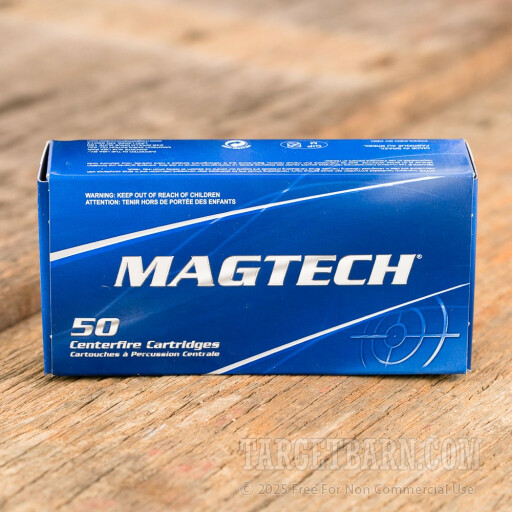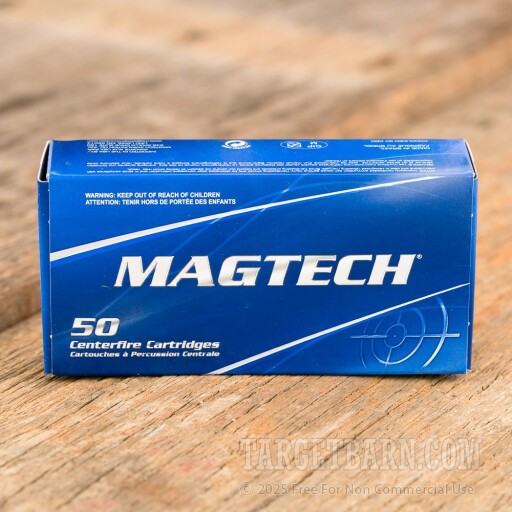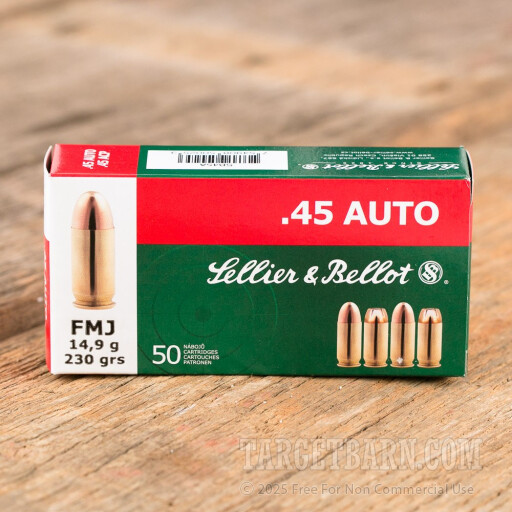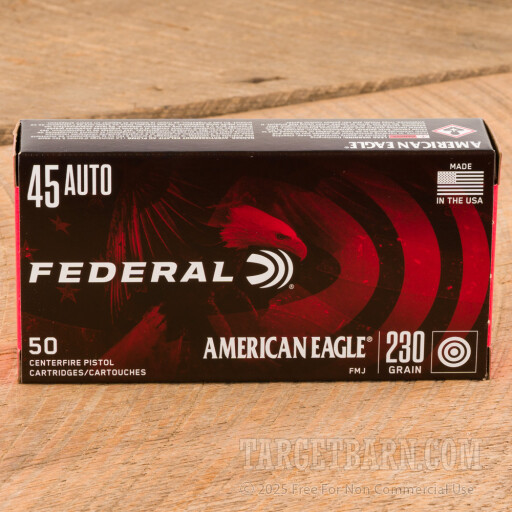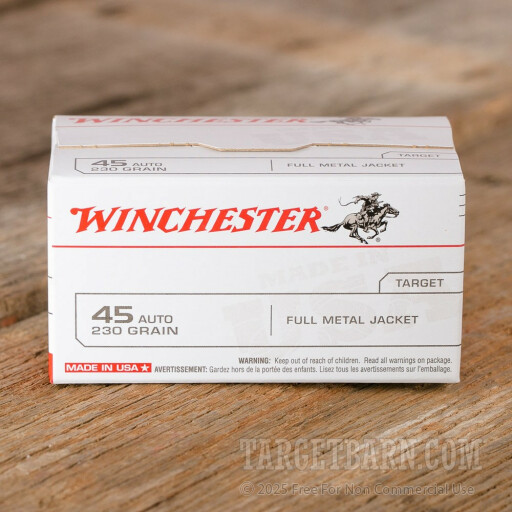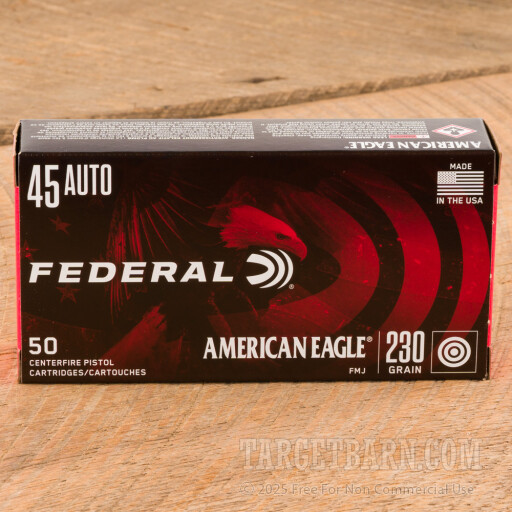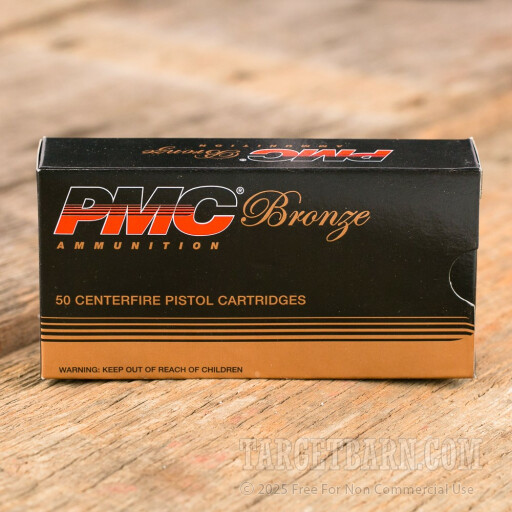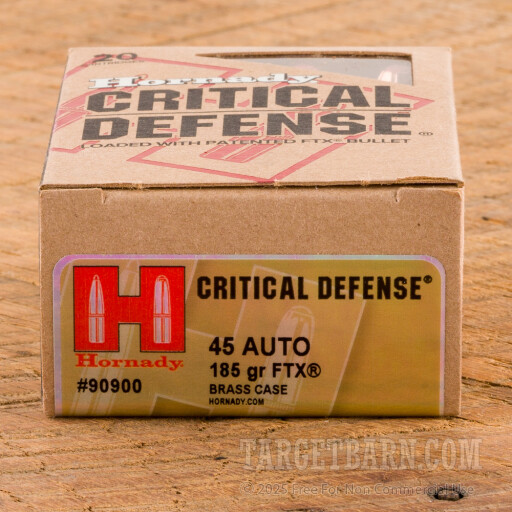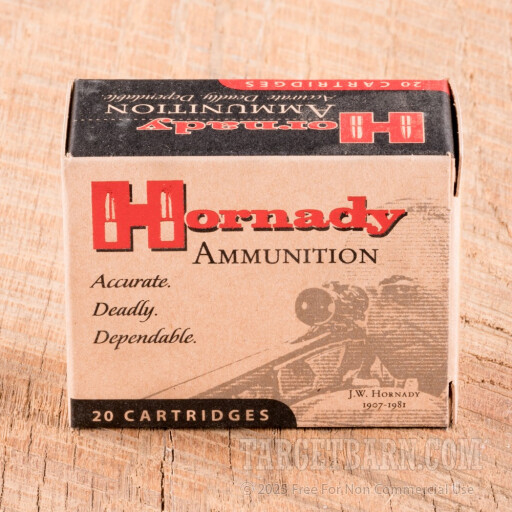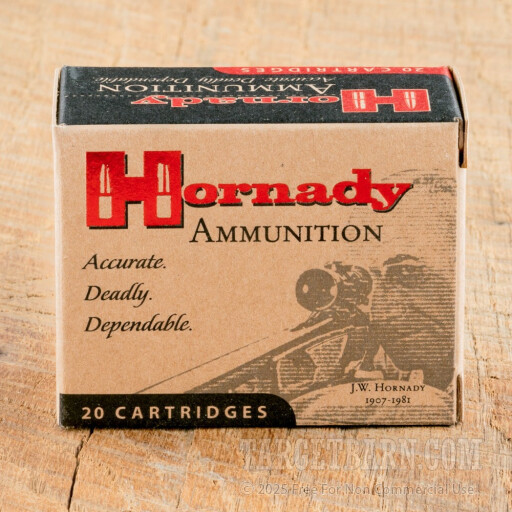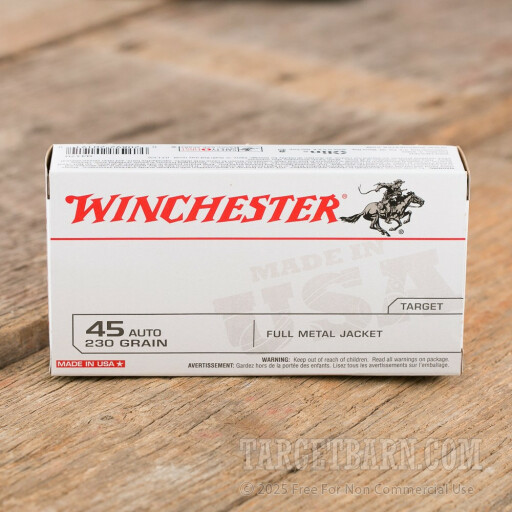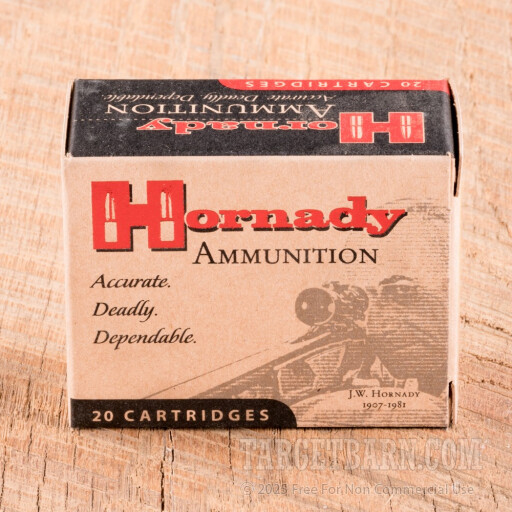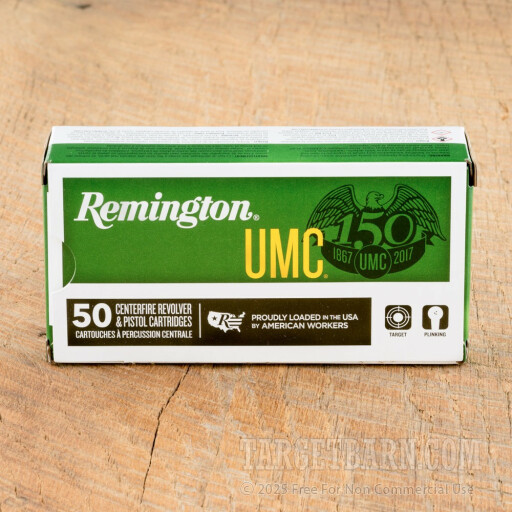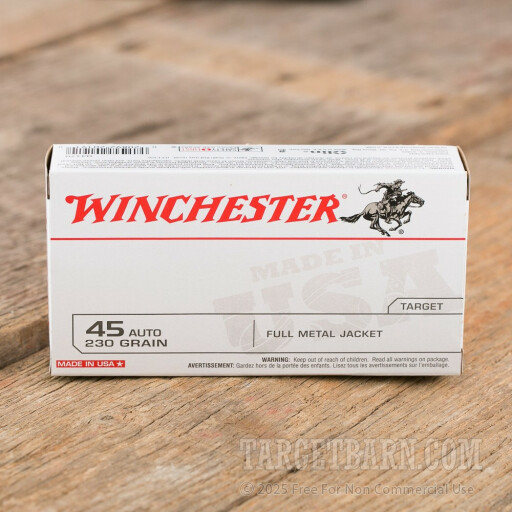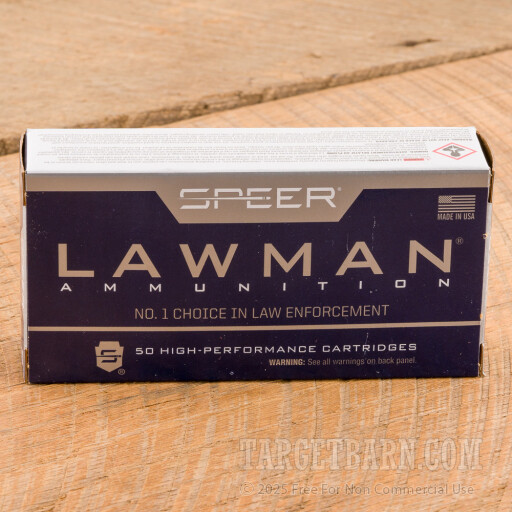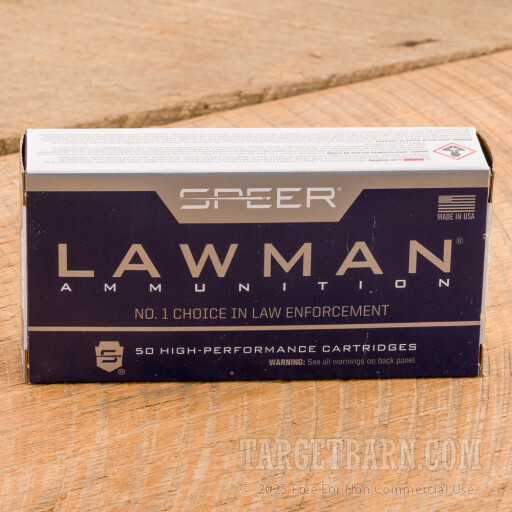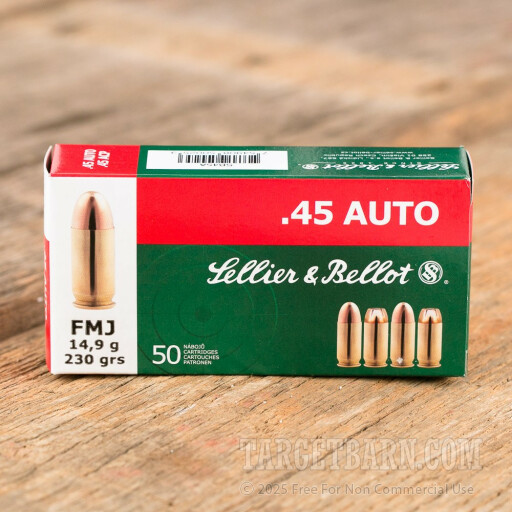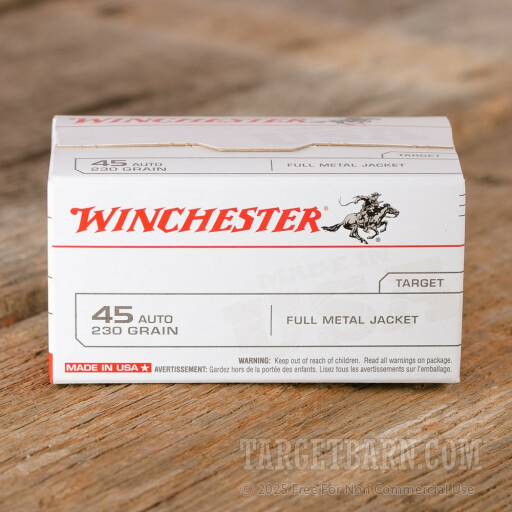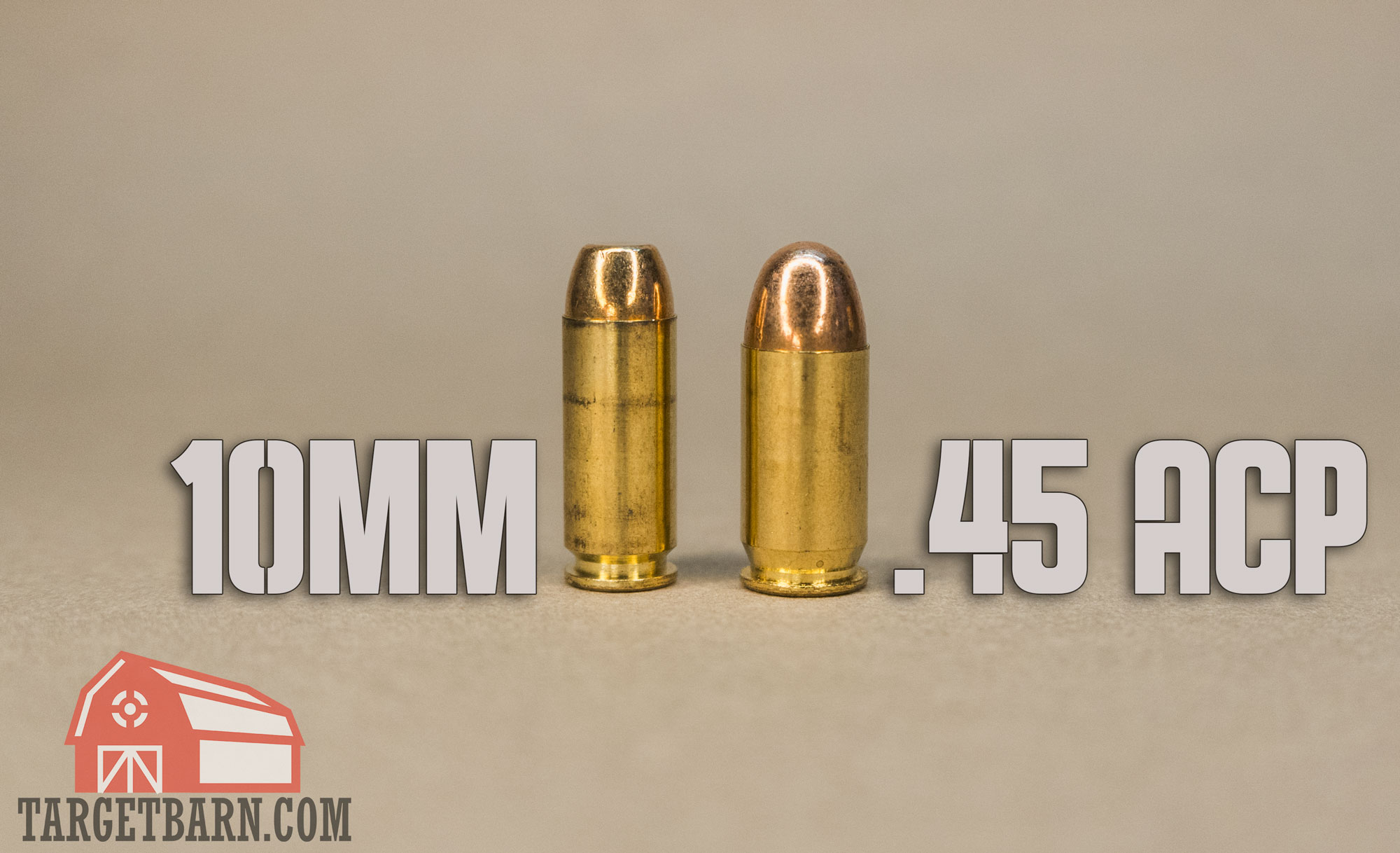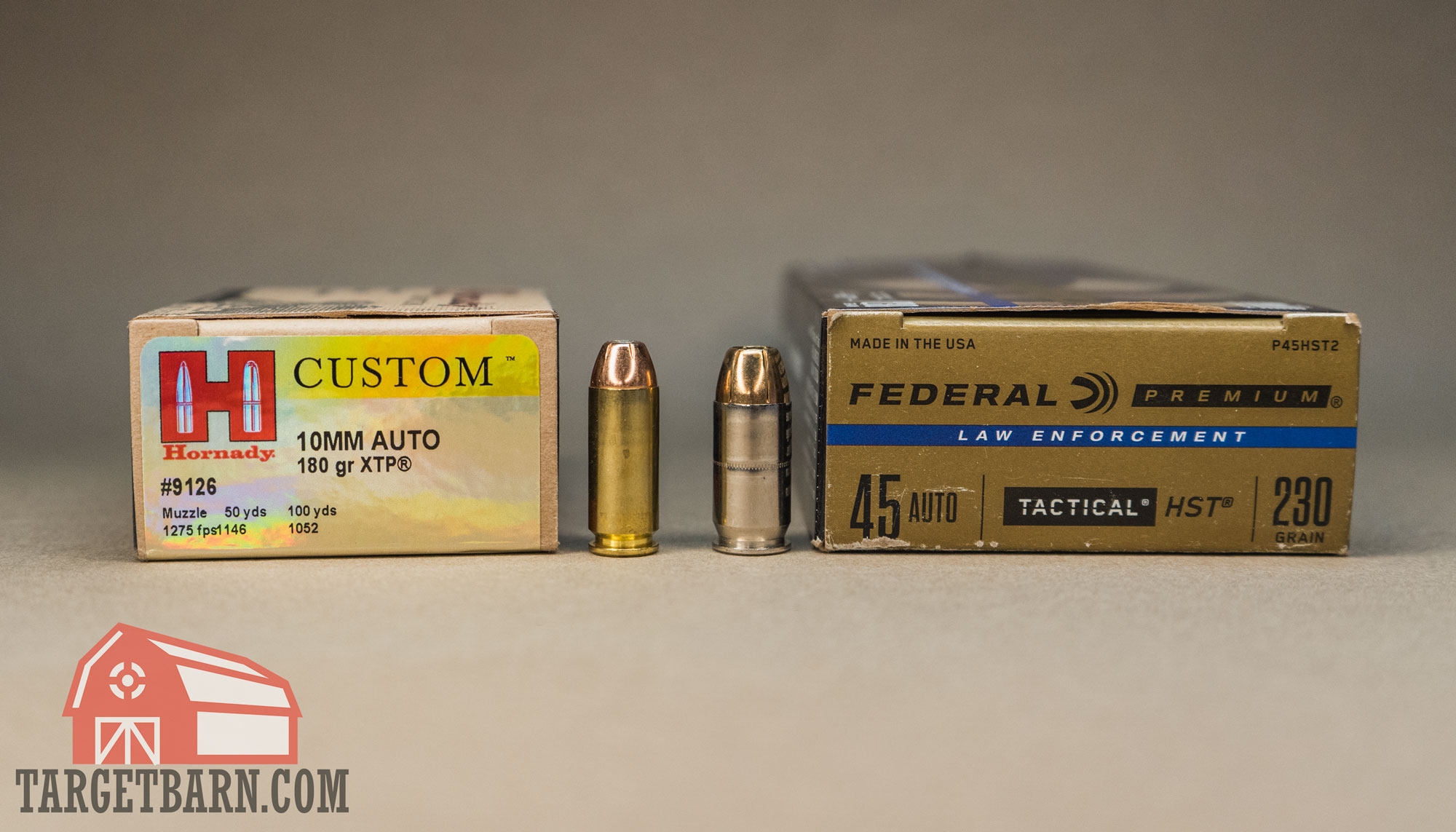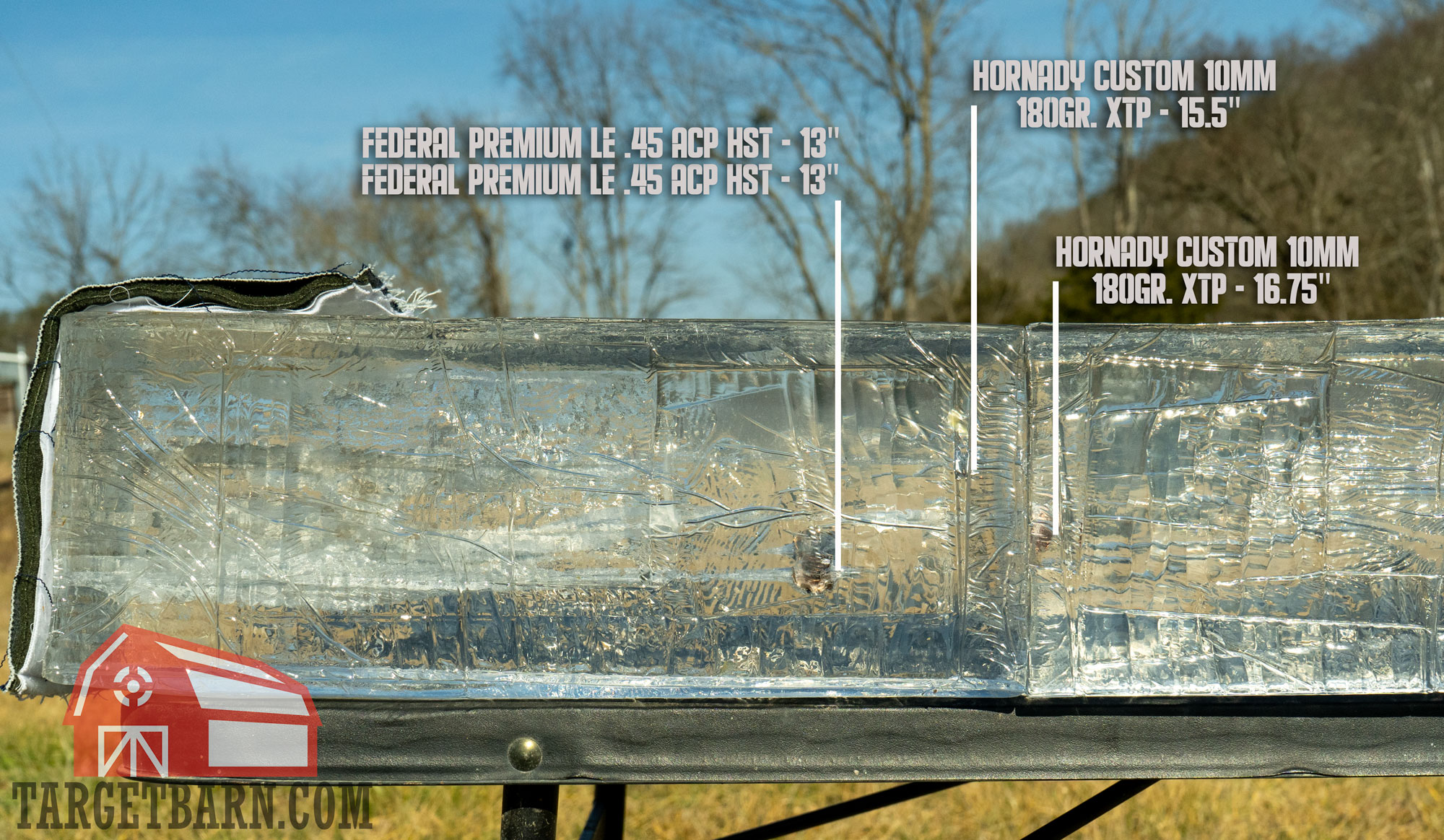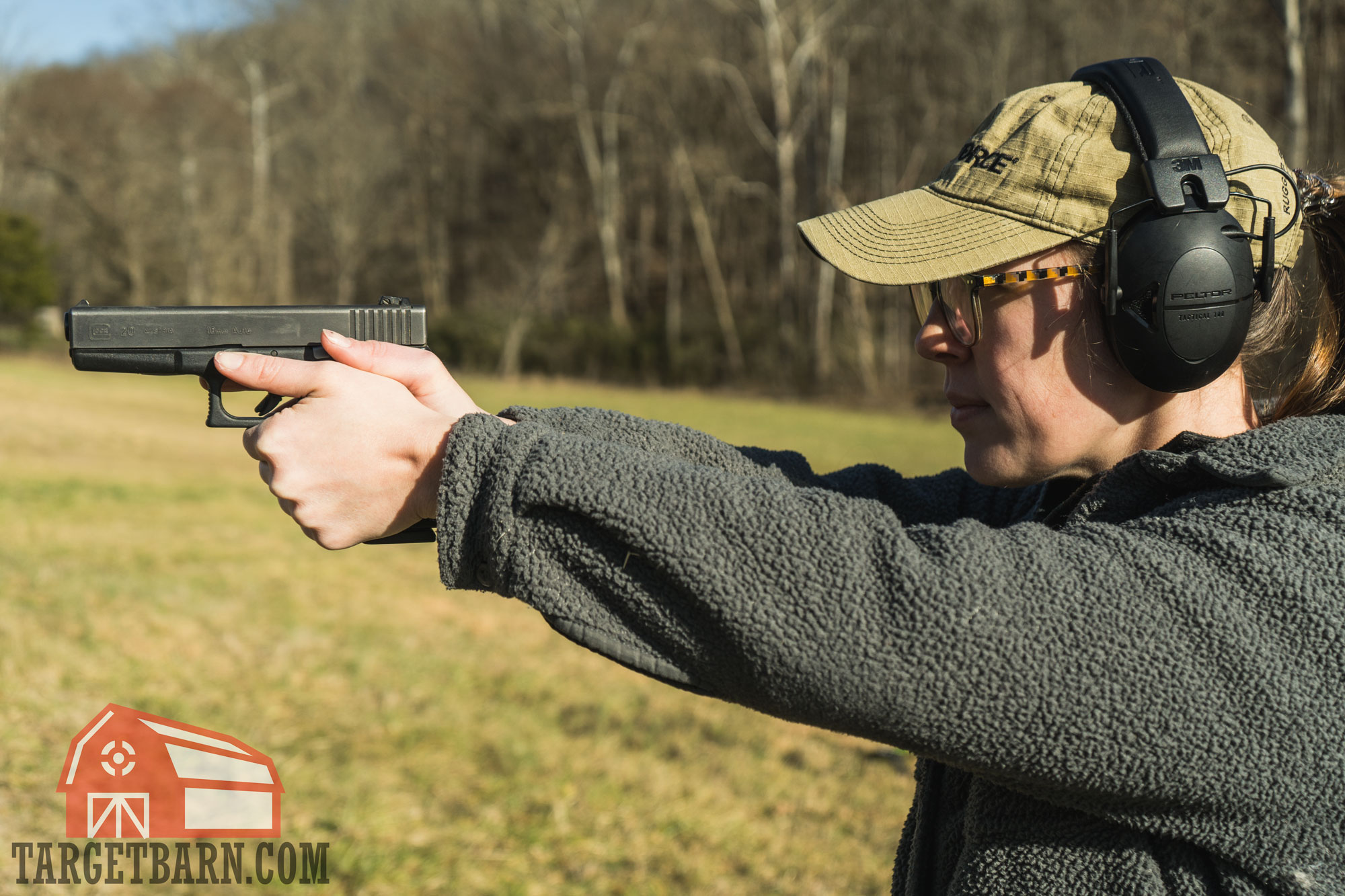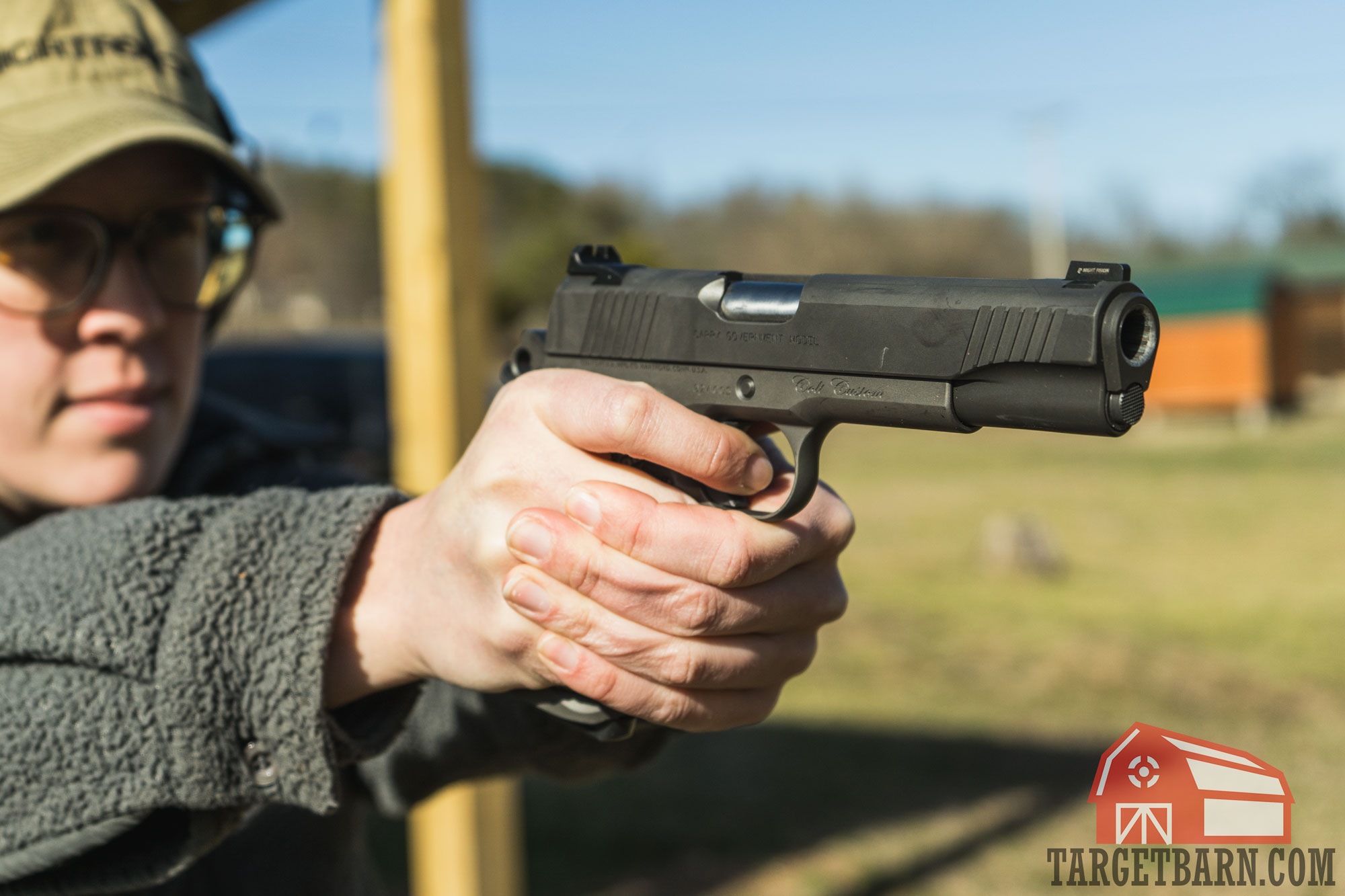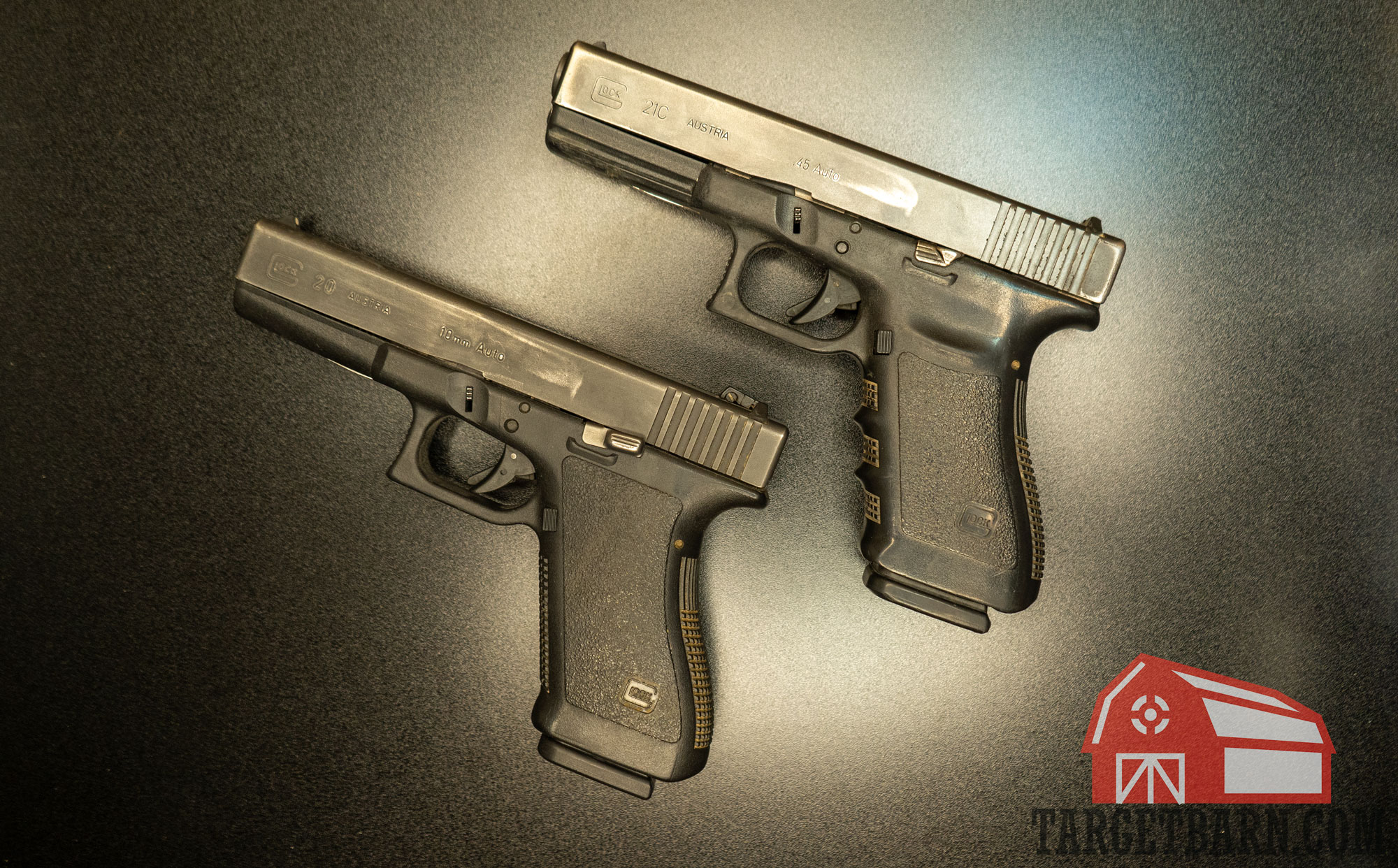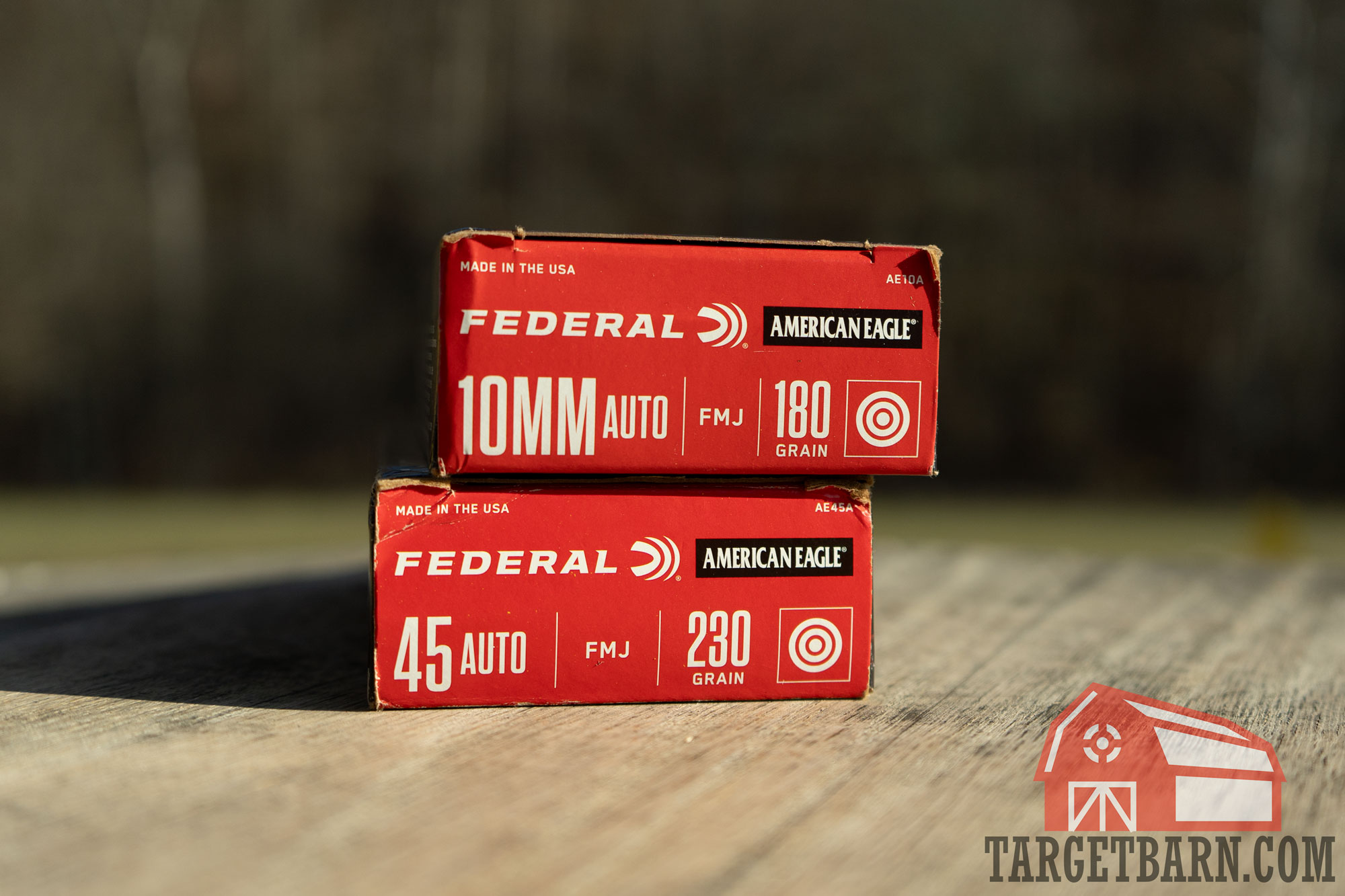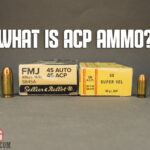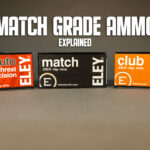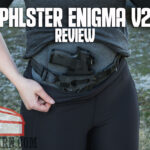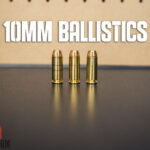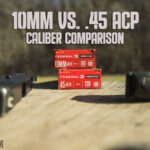If you’re in the market for a large pistol cartridge, you’re likely comparing the 10mm vs. .45 ACP. These two heavy hitters are popular defensive calibers, each with their own advantages and drawbacks.
Today we’re taking a deep dive into the differences between the 10mm vs. .45 ACP. Keep reading to see how they stack up!
Quick Facts
- The 10mm is generally more powerful than the .45 ACP
- Both rounds have similar recoil, which is more harsh than smaller calibers like 9mm
- 10mm pistols generally offer a higher ammo capacity than similarly-sized .45 ACP pistols
- Both rounds are adequately powered for self defense, though the 10mm is the better choice for those needing a pistol in the backcountry against wild animals
- Generally, ammo for both rounds are priced similarly
- The .45 ACP has a slightly longer overall length and slightly wider bullet diameter than the 10mm
10mm vs. .45 ACP Specs & Background
| 10mm | .45 ACP | |
| Place of Origin | United States/Sweden | United States |
| Designer | Jeff Cooper, FFV Norma AB | John Browning |
| Designed | 1983 | 1904 |
| Parent Case | .30 Remington | |
| Case Type | Rimless, straight | Rimless, straight |
| Bullet Diameter | .4005" (10.17mm) | .452" (11.5mm) |
| Case Length | .992" (25.2mm) | .898" (22.8mm) |
| Overall Length | 1.260" (32.0mm) | 1.275" (32.4mm) |
| Primer Type | Large pistol | Large pistol |
| Max. Pressure SAAMI | 37,500 psi | 21,000 psi |
10mm Background
Noted firearms trainer Jeff Cooper played a hand in introducing the 10mm Auto cartridge in the early 1980s. Cooper was 1911 and .45 ACP enthusiast, but sought a pistol caliber that used 200gr. bullets traveling at 1200 fps. and capable of reaching out to 50 yards. The Bren Ten pistol first used the 10mm cartridge, but the pistol was short lived. The cartridge continued on, even being used by the FBI for a short period with the Smith & Wesson Model 1076 pistol.
Today, the 10mm is a bit more of a niche round, but especially popular for those needing a pistol for defense in the backcountry. Choices for 10mm ammo may not be as expansive as more common calibers, but there are still many quality loads to chose from.
.45 ACP Background
John Moses Browning, a legendary firearm designer, developed the .45 ACP in 1904 for use in his prototype Cole semi-auto pistol. In 1911, the U.S. Military adopted the round for use in the Colt M1911 pistol which served as the standard-issue sidearm between 1911 and 1985.
Despite the U.S. Military replacing the .45 ACP with the 9mm, the .45 ACP has remained a popular pistol caliber. There are many .45 ACP pistols on the market today, along with a wide selection of .45 ACP ammo.
10mm vs. .45 ACP Ballistics
Defensive 10mm ammo commonly uses a 180gr. bullet traveling between 1100 fps and 1300 fps. This equates to a muzzle energy between 484 ft/lbs and 676 ft/lbs.
One of the most common bullet weights for defensive .45 ACP ammo is 230gr, with common muzzle velocities of this loading traveling between 850 fps and 950 fps. This puts a muzzle energy between 369 ft-lbs and 461 ft-lbs.
Even when we compare the 10mm vs. .45 ACP with the same bullet weights, the 10mm offers higher velocities and muzzle energy. For example, the Federal Personal Defense 10mm 200gr. HST JHP has a muzzle velocity of 1130 fps and a muzzle energy of 567 ft-lbs. We can compare it to the Hornady Custom .45 ACP 200gr. XTP JHP which has a muzzle velocity of 900 fps and muzzle energy of 360 ft-lbs.
As you can see, the 10mm packs more of a punch than similar .45 ACP loads.
10mm vs. .45 ACP Ballistic Gel Test
| Cartridge | Gun Used | Barrel Length (in.) | Average Muzzle Velocity (fps) | Average Penetration (in.) | Average Expansion (in.) | Average Muzzle Energy (ft-lbs) |
|---|---|---|---|---|---|---|
| Hornady Custom 10mm 180gr. XTP | Glock 20 | 4.61" | 1216.5 | 16.13 | 0.74 | 592 |
| Federal Premium LE .45 ACP 230gr. HST JHP | Glock 21 | 4.61" | 895.5 | 13 | 0.81 | 410 |
I wanted to do a brief ballistic gel test to compare the 10mm vs. .45 ACP. I took one popular defensive round from each round and shot it twice into ballistic gel. I took each shot from a 10-foot distance into Clear Ballistics 10% ballistic gel with a 4-layer fabric covering.
While this brief gel test is not a conclusive summary of each caliber’s efficacy, it can give us an idea of how these two popular loads may perform in a real-world defensive situation.
For the 10mm I shot the Hornady Custom 10mm 180gr. XTP out of a Glock 20 with 4.61” barrel. The .45 ACP round I shot is the Federal Premium LE .45 ACP 230gr. HST JHP out of the Glock 21 with 4.61” barrel. Let’s take a look at how they performed as far as penetration and expansion.
Penetration
For penetration depth, the FBI standard calls for rounds to travel between 12” and 18”. This depth correlates with rounds that adequately penetrate and reach vital organs without over-penetrating.
So, how did these two calibers perform? Both rounds penetrated adequately according to the FBI standards.
The Hornady Custom 10mm round had an average penetration of 16.13” and the two shots of Federal LE .45 ACP both penetrated to 13”. All four rounds fired fell between the 12”-18” FBI standards.
Expansion
While there is no FBI standard for bullet expansion, the general consensus among experts is an expansion of 1.5 times the bullet’s original diameter. Expansion is important because the expanded bullet will create a larger wound channel and also helps to prevent over-penetration.
Again, both rounds met expansion standards easily.
For the 10mm, we look for an expanded diameter of .6”. The Hornady Custom 10mm expanded to an average of .74”. As for the .45 ACP, we look for an expanded diameter of .678”. The Federal LE .45 ACP had an average expansion of .81”.
10mm vs. .45 ACP For Self Defense
Which is better for self defense, the 10mm or .45 ACP? Well, we know both calibers are ballistically sufficient to take down an attacker, have similar recoil, and with ammo costing roughly the same. However, the 10mm offers more power and gives you a higher magazine capacity than similarly-sized .45 ACP pistols.
Since both rounds are adequately powered for self defense, it ultimately comes down to personal preference. As long as you train regularly and load up with a reliable pistol and quality ammo, either caliber will be adequate for self defense. After all, both rounds are more powerful than the 9mm which is the most popular defensive round in the country.
On the other hand, if you’re choosing a caliber for protection in the backcountry, the 10mm has the upper hand.
10mm vs. .45 ACP At The Range 
Now, let’s take a look at the differences in recoil, ammo cost, and ammo capacities between the 10mm and .45 ACP.
Recoil
Now, what about the recoil difference between the 10mm vs. .45 ACP?
Well, if we look at the muzzle energy of common rounds of each caliber, the 10mm generally has a higher muzzle energy than the .45 ACP. This typically equates to more felt recoil.
Despite their muzzle energy differences, I find the rounds to have similar recoil when shooting comparable guns. At the range, I shot both calibers out of guns with the same barrel length and grip size: a Glock 20 and Glock 21. I could feel slight differences in recoil, but if I were to shoot each gun blindfolded, I would not be able to distinguish between each caliber.
Ammo Cost
If choosing between the 10mm vs. .45 ACP, the cost of ammo may be an important factor for some shooters. After all, you’ll need to purchase defensive ammo occasionally and range ammo more regularly.
Generally, both rounds are pretty close in cost. Of course, there will be fluctuations in prices, but the cost is pretty close, unlike when comparing the 10mm vs. 9mm or .45 ACP vs. 9mm.
Gun Options & Capacities
When most people think of a pistol chambered in .45 ACP, they think of the classic 1911. The single action with an 8-round magazine capacity, was once a game-changer, offering the same capacities as 9mm pistols on the market at the time, but with a much more powerful round. Today, however, there are many semi-auto pistols to choose from in both calibers.
When we compare similarly sized pistols, the 10mm gets you a higher ammo capacity. For example, the Glock 20 (10mm) and Glock 21 (.45 ACP) used in our gel test both use 4.61” barrels and have the same size grip frame. However, the 10mm Glock 20 has a 15-round capacity, while the .45 ACP Glock 21 has a 13-round capacity.
Generally, the highest capacity you’ll see in a .45 ACP pistol is around 18-rounds. As for 10mm, you can find pistols with upwards of 22-round capacities.
Final Thoughts
It’s hard to go wrong with either the .45 ACP or 10mm. Both cartridges are more than capable as defensive rounds, and have many similar features. Ultimately, the 10mm does have the upper hand in capacity and power, which may be the dealbreaker for many shooters.
Whichever caliber you go with, just know you can stock up with top-quality ammo at a great price here at Target Barn!

